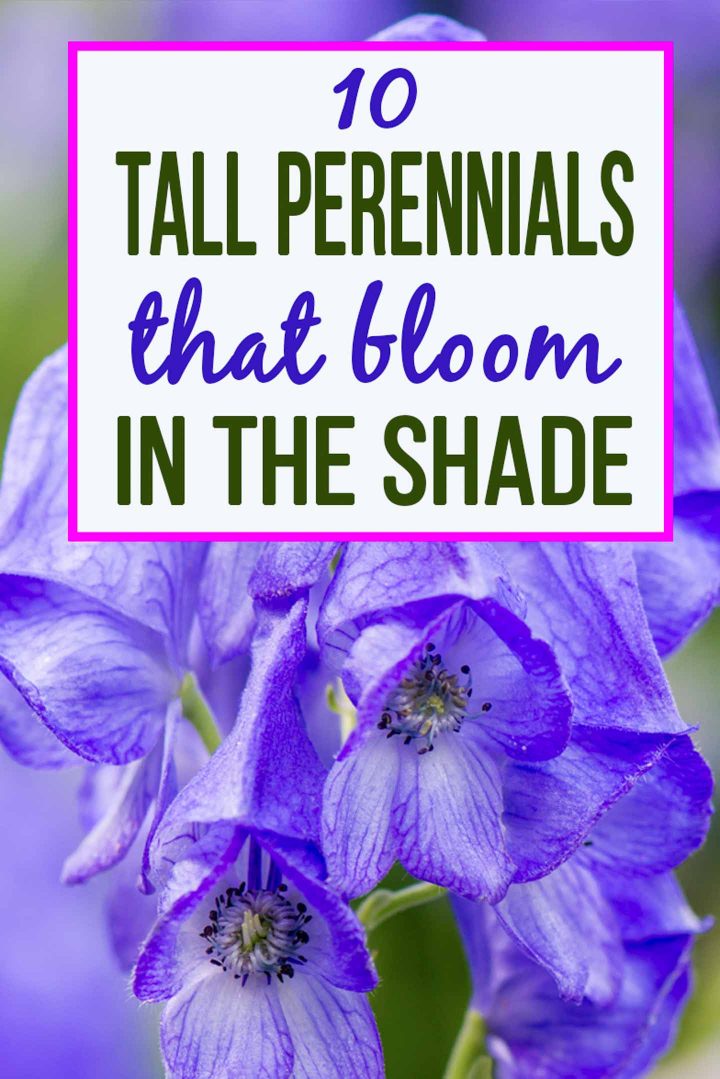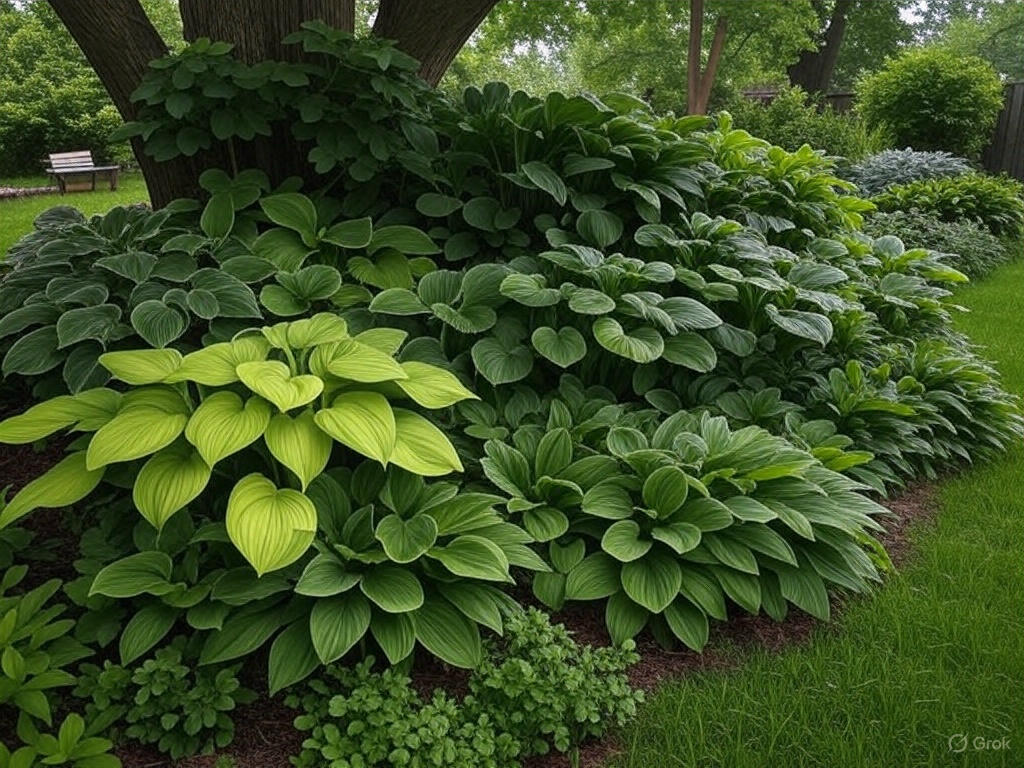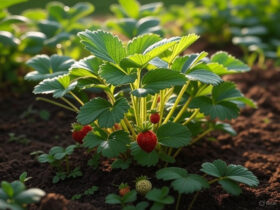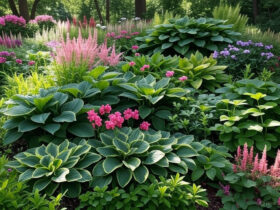Creating a lush garden in a shady area can be challenging. Perennial plants thrive in shade, offering year-round beauty.
Shade-loving perennials are perfect for those tricky spots in your garden where sunlight is scarce. These plants not only survive but flourish in low-light conditions, bringing vibrant colors and textures to otherwise dull areas. Whether you have a woodland garden or a shaded corner, these perennials can add life and interest.
In this blog post, we will explore some of the best perennial plants for shade. Discover how these plants can transform your shady spaces into lush, thriving gardens. Get ready to add some green to your shaded areas and enjoy a beautiful landscape all year round.
Benefits Of Perennial Plants
Perennial plants for shade offer many benefits for gardeners. These plants return year after year, providing color and texture to shaded areas. They are a great choice for those who want a beautiful garden with less effort. Let’s explore the benefits of perennial plants, focusing on their long-term growth and low maintenance.
Long-term Growth
Perennial plants for shade are known for their long-term growth. Unlike annuals, which need replanting every year, perennials come back each season. This means you can enjoy their beauty for many years with little effort.
Here are some key benefits of their long-term growth:
- Consistency: You get a consistent look in your garden year after year.
- Cost-effective: You save money by not having to buy new plants every year.
- Mature plants: Over time, perennial plants grow larger and become more established, often producing more flowers.
- Improved soil: Their roots help improve soil structure over time.
Perennial flowers shade loving, like hostas and ferns, thrive and spread, creating lush, green areas. They adapt well to their environment, becoming hardier each year. This resilience makes them a reliable choice for shaded gardens.
Table of Contents
Low Maintenance
Another major benefit of perennial plants for shade is their low maintenance. Once established, they require minimal care, which is perfect for busy gardeners.
Consider these low-maintenance features:
| Feature | Benefit |
|---|---|
| Drought tolerance | Many perennials can survive with less water, making them ideal for dry shade. |
| Pest resistance | They are often more resistant to pests compared to annuals. |
| Less weeding | Once established, they crowd out weeds, reducing the need for weeding. |
Flowering plants for shade like astilbes and hellebores need minimal pruning and feeding. They thrive on their own, making them a practical choice for shaded gardens. Regular care involves simple tasks like removing dead leaves and occasional watering.
Enjoy beautiful blooms and foliage with less effort. Choose flowers that like shade and experience the ease of maintaining a perennial garden.

Ideal Conditions For Shade
Perennial plants for shade can transform dark corners of your garden into lush, vibrant spaces. Understanding the ideal conditions for shade is essential for growing healthy, thriving plants. By knowing the right light levels and soil types, you can create a perfect environment for your shade-loving perennials.
Light Levels
Perennial plants for shade thrive in areas with limited sunlight. Understanding the different levels of light can help you choose the best plants for your garden. Here are the various light levels suitable for flowers that like shade:
- Full Shade: These areas receive less than 3 hours of direct sunlight daily. Perfect for plants like hostas and ferns.
- Partial Shade: These spots get 3-6 hours of sunlight each day. Ideal for plants like astilbe and bleeding heart.
- Dappled Shade: Light filters through leaves, creating patches of sun and shade. Great for hydrangeas and columbine.
Plants adapt differently to these light levels. For example, hostas flourish in full shade, while astilbes prefer partial shade. Understanding these requirements ensures your perennial flowers shade loving remain healthy and vibrant.
Choosing the right flowering plants for shade involves assessing the light levels in your garden. Consider the following table for quick reference:
| Light Level | Suitable Plants |
|---|---|
| Full Shade | Hostas, Ferns |
| Partial Shade | Astilbe, Bleeding Heart |
| Dappled Shade | Hydrangeas, Columbine |
Soil Types
Soil plays a crucial role in the health of perennial plants for shade. Different flowers for shade perennials require specific soil types to thrive. Here are some soil types and their characteristics:
- Loamy Soil: Rich, well-draining, and contains a balance of sand, silt, and clay. Ideal for most flowering plants for shade.
- Clay Soil: Heavy and retains moisture, but can be compacted. Suitable for plants like astilbe and hostas.
- Sandy Soil: Drains quickly and is light. Best for plants needing less water, like certain ferns.
Matching the soil type with the right plants ensures your garden flourishes. Perennial flowers shade loving often prefer loamy soil because it provides the best drainage and nutrient retention.
Here is a quick guide to soil types and suitable plants:
| Soil Type | Suitable Plants |
|---|---|
| Loamy Soil | Most shade-loving perennials |
| Clay Soil | Astilbe, Hostas |
| Sandy Soil | Ferns, Specific drought-tolerant plants |
Understanding the ideal soil types for your shade garden helps you select the right plants, ensuring they receive the nutrients and water they need to thrive.
Top Perennials For Shade
Choosing the right perennial plants for shade can transform a dim corner of your garden into a lush, green retreat. Some flowers that like shade thrive under the canopy of trees, bringing texture and color to areas that receive minimal sunlight. Discover the top perennials for shade that will flourish in these conditions and add beauty to your landscape.
Ferns
Ferns are one of the best perennial plants for shade, known for their delicate and feathery fronds. These plants come in various shapes and sizes, making them versatile for any garden.
Some popular fern varieties include:
- Maidenhair Fern – Delicate and lacy, perfect for adding a soft touch.
- Japanese Painted Fern – Offers a striking silver and burgundy foliage.
- Christmas Fern – Stays green throughout the winter, adding year-round interest.
Ferns thrive in moist, well-drained soil and prefer rich organic matter. They are low-maintenance and can spread easily, filling shady areas quickly. Here’s a quick overview:
| Fern Variety | Light Requirements | Soil Type |
|---|---|---|
| Maidenhair Fern | Partial to full shade | Moist, well-drained |
| Japanese Painted Fern | Partial to full shade | Moist, humus-rich |
| Christmas Fern | Partial to full shade | Well-drained |
Adding ferns to your garden ensures a lush, green environment that thrives in shaded areas. They pair well with other shade-loving plants and provide a natural look.
Hostas
Hostas are another excellent choice for flowers that like shade. Known for their large, lush leaves, they come in a variety of colors, from deep green to variegated patterns.
Key features of Hostas:
- Variety of Colors – Leaves can be blue, green, yellow, or variegated.
- Easy to Grow – Very low-maintenance and adaptable to many soil types.
- Attractive Flowers – Produce lavender or white flowers in the summer.
Hostas prefer rich, moist, and well-drained soil. They thrive in partial to full shade and are perfect for creating a lush ground cover. Here’s a simple guide:
| Hosta Variety | Light Requirements | Soil Type |
|---|---|---|
| Blue Angel | Partial to full shade | Moist, well-drained |
| Patriot | Partial shade | Rich, well-drained |
| Frances Williams | Full shade | Humus-rich |
Hostas provide a beautiful, leafy backdrop for other flowering plants for shade. They are also deer-resistant and can be divided easily to create more plants for your garden.
:max_bytes(150000):strip_icc()/shaded-flower-garden-perennials-hosts-0323-2000-b994b2a850b94c118bc9cb60164d390b.jpg)
Caring For Shade Perennials
Perennial plants for shade bring beauty to those darker corners of your garden. These plants thrive in areas where sunlight is limited. Caring for shade perennials ensures they grow healthy and vibrant. Proper watering and fertilization are key elements in maintaining these plants.
Watering Needs
Perennial plants for shade have specific watering requirements. These plants often grow under trees or in areas with less direct sunlight, which can affect soil moisture levels. Here are some tips to ensure your shade-loving perennials get the right amount of water:
- Consistent Moisture: Shade perennials need consistent moisture. Check the soil regularly to ensure it is neither too dry nor too soggy.
- Morning Watering: Water the plants in the morning. This allows the soil to absorb moisture before the sun evaporates it.
- Deep Watering: Water deeply to encourage roots to grow deeper into the soil. This helps plants withstand dry periods better.
- Mulching: Apply mulch around the base of the plants. Mulch helps retain moisture and keeps the soil cool.
- Avoid Overwatering: Overwatering can lead to root rot. Ensure the soil has good drainage.
Understanding the watering needs of flowers that like shade can make a significant difference in their growth. Use a moisture meter to monitor soil conditions if unsure. Remember, the goal is to keep the soil evenly moist but not waterlogged. This balance will help your perennial flowers shade loving thrive.
Fertilization Tips
Fertilization is crucial for flowering plants for shade. Proper nutrients ensure healthy growth and vibrant blooms. Here are some fertilization tips for shade perennials:
- Balanced Fertilizer: Use a balanced fertilizer (such as 10-10-10) to provide essential nutrients. Apply it according to the package instructions.
- Organic Matter: Add organic matter like compost or well-rotted manure to the soil. This enriches the soil and improves its structure.
- Slow-Release Fertilizers: Consider slow-release fertilizers. These provide nutrients over time, reducing the need for frequent applications.
- Spring Feeding: Feed your plants in early spring. This gives them a good start for the growing season.
- Avoid Over-Fertilizing: Over-fertilization can harm plants. Too much fertilizer can lead to excessive foliage growth and fewer flowers.
Using the right fertilization techniques ensures your flowers for shade perennials stay healthy. Conduct a soil test to determine nutrient levels and amend as needed. Fertilization is not just about adding nutrients but ensuring the soil is conducive to plant growth. Proper care will lead to lush, blooming perennial flowers shade loving.
Designing A Shade Garden
Creating a beautiful garden in the shade can be a rewarding experience. Designing a shade garden with perennial plants for shade offers a lush, green oasis. These gardens are havens for those who prefer cool, tranquil spaces. With the right planning, your shade garden can thrive with vibrant foliage and delicate blooms. This guide will help you explore the art of designing a shade garden, ensuring your space is both functional and aesthetically pleasing.
Layering Plants
Layering is key to a successful shade garden. It adds depth and interest, turning a plain area into a multi-dimensional paradise. Start with tall plants at the back and work your way down to shorter ones in the front. This setup creates a natural flow and makes it easy for all plants to get the light they need.
- Tall Plants: Use ferns and hostas. These are perfect flowers for shade perennials. They create a lush backdrop.
- Medium Height: Include bleeding hearts and astilbes. These perennial flowers are shade loving and add texture.
- Ground Cover: Consider using lily of the valley or wild ginger. These flowering plants for shade help cover bare spots.
Here’s a simple table to visualize your layering:
| Layer | Plant Examples |
|---|---|
| Tall | Ferns, Hostas |
| Medium | Bleeding Hearts, Astilbes |
| Ground Cover | Lily of the Valley, Wild Ginger |
Proper layering ensures that each plant stands out, creating a harmonious garden.
Color Combinations
Color is crucial in designing a shade garden. It sets the mood and brings vibrancy to shady spots. Perennial plants for shade often come in soft, muted tones. But, strategic use of color can make your garden pop.
Consider these tips for effective color combinations:
- Contrast: Use dark green foliage with bright flowers. White or pale pink blooms stand out against deep greens.
- Monochromatic Scheme: Choose different shades of one color. This creates a soothing, unified look.
- Accent Colors: Add a splash of bold colors like red or purple for drama.
Here’s an example layout:
- Contrast: Pair hostas with white bleeding hearts.
- Monochromatic: Use various shades of blue, like bluebells and blue hostas.
- Accents: Include purple heucheras for a vibrant touch.
Choosing the right color combinations makes your garden more inviting. It enhances the natural beauty of flowers that like shade. With thoughtful planning, your shade garden can be a serene retreat full of life and color.

Common Pests And Diseases
Perennial plants for shade bring life to those dim corners of your garden. These shade-loving plants thrive where sunlight is scarce, adding vibrant colors and textures. But even in shady gardens, pests and diseases can become a problem. Common pests and diseases affect the health and beauty of these plants. Knowing how to deal with these issues ensures your perennial flowers remain lush and vibrant.
Identifying Issues
Understanding the signs of pests and diseases in your flowering plants for shade is crucial. Early identification can save your plants from severe damage. Common pests include aphids, slugs, and snails. They often leave trails or chew marks on leaves.
- Aphids: Small, soft-bodied insects that suck plant sap, causing leaves to curl and distort.
- Slugs and Snails: Leave slime trails and holes in leaves, especially on hostas and other shade-loving perennials.
Diseases such as powdery mildew and root rot can also affect flowers that like shade. Powdery mildew appears as white, powdery spots on leaves. Root rot results from overwatering and poor drainage, leading to wilting and discolored leaves.
| Pest/Disease | Symptoms |
|---|---|
| Aphids | Curled, distorted leaves |
| Slugs and Snails | Slime trails, holes in leaves |
| Powdery Mildew | White spots on leaves |
| Root Rot | Wilting, discolored leaves |
Prevention Strategies
Keeping pests and diseases at bay requires proactive measures. Prevention strategies protect the health of your perennial flowers shade loving. Start by ensuring proper plant care.
- Healthy Soil: Use well-draining soil to prevent root rot. This keeps your plants strong and healthy.
- Regular Inspection: Check your plants for signs of pests and diseases regularly. Early detection helps in quick response.
- Natural Predators: Encourage birds and beneficial insects like ladybugs. They help control aphid populations.
- Physical Barriers: Use copper tape or crushed eggshells around plants. They deter slugs and snails.
Maintain proper spacing between plants to improve air circulation. This reduces the risk of powdery mildew. Water plants at the base to avoid wetting leaves, minimizing fungal diseases. These simple steps keep your flowering plants for shade healthy and flourishing.
Seasonal Changes In Shade Gardens
Perennial plants for shade bring life to dim corners of your garden throughout the year. Seasonal changes in shade gardens are a sight to behold. Each season offers unique colors and textures, showcasing the beauty of shade-loving plants. Let’s explore how your shade garden can transform from spring to fall.
Spring Blooms
Spring is a magical time in shade gardens. As the days get longer, perennial plants for shade begin to bloom. These flowers that like shade add a burst of color to your garden.
Here are some popular choices for spring blooms:
- Bleeding Heart: Delicate, heart-shaped flowers in pink and white.
- Hosta: Lush foliage with spikes of lavender or white flowers.
- Astilbe: Feathery plumes in shades of pink, red, and white.
These flowers for shade perennials thrive in low light and bring vibrant hues to your garden. They are perfect for creating a serene and colorful space.
Consider planting these flowering plants for shade in groups for a more dramatic effect. Mixing different varieties can also create a layered look, adding depth and interest.
Here’s a quick reference table for spring-blooming shade perennials:
| Plant | Bloom Color | Height |
|---|---|---|
| Bleeding Heart | Pink, White | 1-3 feet |
| Hosta | Lavender, White | 1-2 feet |
| Astilbe | Pink, Red, White | 1-4 feet |
Fall Foliage
Fall brings a new dimension to shade gardens. The foliage of perennial plants for shade transforms into a tapestry of warm colors. These changes create a stunning display as the temperatures drop.
Here are some shade-loving perennials that offer beautiful fall foliage:
- Japanese Forest Grass: Turns golden yellow in autumn.
- Heuchera: Leaves change to shades of red, orange, and purple.
- Solomon’s Seal: Foliage turns bright yellow.
These perennial flowers shade loving not only provide color but also texture. The different leaf shapes and sizes create a visually appealing garden.
Consider using these plants to highlight paths or borders. They can make your garden look vibrant even as other plants start to fade.
Here’s a quick reference table for fall foliage shade perennials:
| Plant | Fall Color | Height |
|---|---|---|
| Japanese Forest Grass | Golden Yellow | 1-2 feet |
| Heuchera | Red, Orange, Purple | 1-1.5 feet |
| Solomon’s Seal | Bright Yellow | 1-3 feet |
Frequently Asked Questions
What Are The Best Shade-loving Perennial Plants?
Hostas, ferns, and astilbes thrive in shade. These plants add beauty to shaded gardens.
How To Care For Shade Perennials?
Water regularly and ensure proper drainage. Mulch helps retain moisture. Fertilize lightly to support growth.
Can Perennials Survive In Deep Shade?
Yes, many perennials like hostas and ferns can grow in deep shade. They adapt well.
Do Shade Perennials Need Sunlight?
Shade perennials need some indirect sunlight. They thrive with minimal direct sunlight.
What Soil Is Best For Shade Perennials?
Rich, well-draining soil is ideal. Adding compost improves soil quality for shade perennials.
How Often Should I Water Shade Perennials?
Water shade perennials weekly. Ensure soil remains moist but not waterlogged.
Which Perennials Bloom In Shade?
Astilbes and heucheras bloom in shade. Their vibrant flowers brighten up shaded areas.
Conclusion
Perennial plants thrive in shaded gardens. They bring life and color. Easy to care for, they suit busy gardeners. Hostas, ferns, and astilbes are popular choices. These plants add texture and beauty. Consider their light needs for best growth. Plant them in rich, well-drained soil.
Regular watering helps them flourish. Perennials return year after year. This makes them a smart investment. Enjoy a vibrant garden with minimal effort. Shade gardens can be beautiful and inviting. Start planting today and enjoy the transformation. Your shady spots will soon be thriving oases.










Leave a Reply